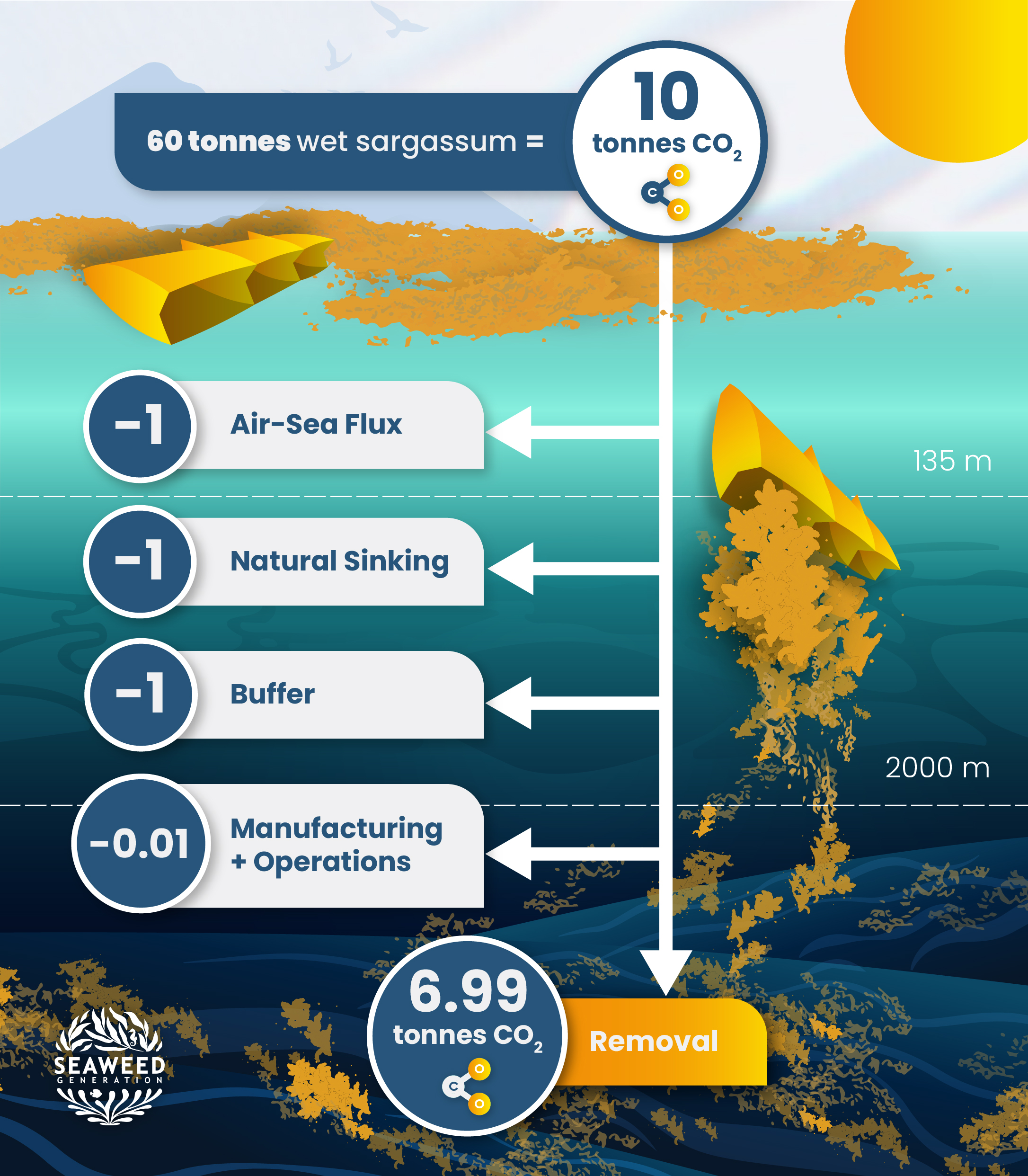In this respect, if you’re in the CDR world, you could think of us as seaweed meets biochar (or Charm) - we take existing biomass containing carbon, and remove it from the carbon cycle for a long long time.
Here’s how it works
The atmosphere and ocean are exchanging CO2 all the time. The upper ocean absorbs 38% of our annual CO2 emissions, which means that the net amount of CO2 the ocean is absorbing each year is increasing overall. It also means that if at some point this were to reverse, and the ocean started putting out more than it absorbs overall, then we’d be in deep trouble very quickly.
CO2 enters the upper ocean layer as a gas. Here it is classified as ‘inorganic’, which means that it is not part of an organism, it’s in the water. Much like land animals, fish breathe in Oxygen, and much like land plants, seaweeds and phytoplankton breathe in CO2. When it grows (ever so efficiently), Sargassum absorbs that CO2. Growing at the upper layer of the ocean, in the tropics, the air-sea flux level of the water that the Sargassum has taken CO2 from is high (90% or more over 8-9 months, read our Scientific Advisory Board member and air-sea gas exchange expert, Andy Watson on the subject) - we’ll be measuring and monitoring to confirm those numbers.
Our AlgaRay skims the top of the ocean, taking in the Sargassum, and sinks it to 135 metres, where the Sargassum is negatively buoyant. After ejecting the biomass, the AlgaRay resurfaces to collect more. The Sargassum travels at a rate of 10m per minute to reach a depth of > 2000m in 4 hours.
Once at those depths, biomass is considered to be removed for hundreds if not thousands of years if it breaks down (this will happen very slowly) and is dispersed into the water, the deep ocean carbon cycle is very very slow. The biomass would be removed for geological timescales if it becomes incorporated into the sea floor.
Fun fact: CO2 at 3000m is negatively buoyant and will sink, we’re investigating and measuring more, but it may be that waters below 3000m are the ones that would make this removal truly permanent.
Our Carbon Calculation
Cultivated seaweed would need to allow for plankton displacement, but as Sargassum is already displacing it, we don’t do that to calculate our additionality.
What we do need to account for is the amount of biomass that would reach a depth of over 1000m naturally. Current estimates sit at around 10%, but need further investigation and confirmation.
So our calculation goes like this:

That is the additionality that we are calculating. Of course we need to measure, monitor, report and verify all of this over time. The numbers will be refined as we continue.